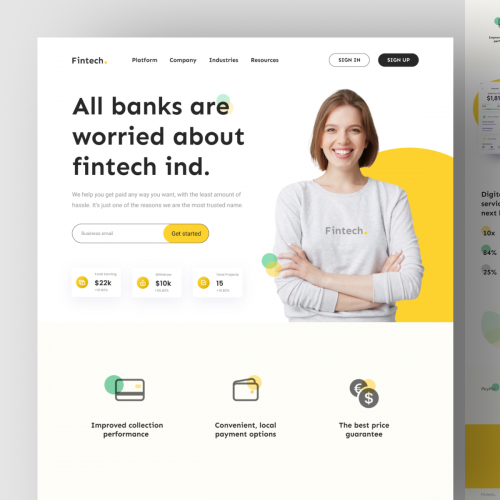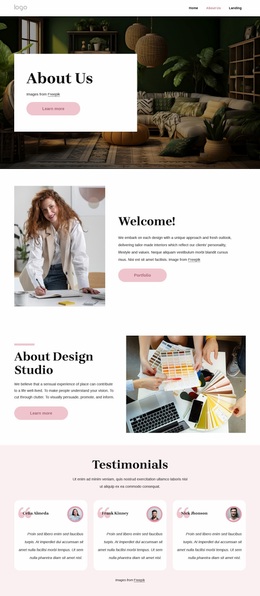How Website Design Can Help Improve User Experience and Engagement
How Website Design Can Help Improve User Experience and Engagement
Blog Article
The Ultimate Guide to Modern Web Site Layout Trends
In the ever-evolving electronic landscape, contemporary site style trends play a critical role fit individual experience and engagement. From the rise of minimalist style concepts that focus on simpleness to the effect of vibrant typography in specifying brand identity, each aspect adds to a cohesive on the internet existence. The focus on responsive and mobile-first strategies, together with cutting-edge microinteractions, even more enhances functionality. Additionally, the expanding emphasis on lasting web style techniques shows a dedication to environmental duty. These patterns collectively elevate important questions concerning the future of efficient website design and what it suggests for consumers and services alike.
Minimalist Design Principles
Minimal layout concepts stress the concept that much less is much more, supporting for simpleness and capability in visual communication. This strategy strips away unneeded aspects, concentrating instead on crucial components that communicate the designated message effectively. By prioritizing quality, minimalist style enhances customer experience, allowing visitors to browse internet sites easily.
Core tenets of minimalist design consist of using sufficient white room, which produces a sense of equilibrium and company. This negative area not just routes the visitor's attention to crucial aspects yet likewise fosters a soothing aesthetic atmosphere. Additionally, a minimal color combination is usually utilized, using soft tones or single schemes to keep visual communication and prevent overwhelming the user.
Typography plays a critical duty in minimalist style, where readable font styles are picked for their simpleness and performance in communicating content. Pictures and graphics are conserved, making sure that they serve a function instead of sidetrack from the overall message. Ultimately, minimalist style concepts cultivate a focused environment that encourages individuals to involve with the material, improving the overall efficiency of modern site layout. This pattern shows a growing admiration for thoughtful, user-centric looks in electronic areas.
Bold Typography Options
Embracing bold typography options has become a specifying attribute of contemporary web site design, as it effectively captures attention and shares solid messaging. Developers are progressively utilizing typography not just as a practical component however as an essential visual component that boosts the general visual and customer experience.

Moreover, the juxtaposition of strong typography with minimalist layout concepts enables for striking contrasts, enhancing readability while maintaining visual allure. The use of whitespace around strong text further stresses its value, making certain that the message resonates with the target market.
As digital landscapes end up being more competitive, leveraging vibrant typography enables brand names to separate themselves and leave a long lasting perception. The careful choice of fonts and their application can evoke emotions, develop tone, and drive action, making bold typography an indispensable tool in contemporary internet site style. Inevitably, it is an effective method to boost storytelling and guarantee that vital messages are not only seen but additionally felt.
Receptive and Mobile-first Layout
Responsive and mobile-first design has become a vital principle in modern-day website growth, showing the increasing reliance on smart phones for accessing online material. As customer actions shifts in the direction of mobile browsing, developers must prioritize creating experiences that adjust seamlessly across various screen sizes and resolutions.
A responsive design makes sure that a site automatically readjusts its format, photos, and functionality based on the gadget this contact form being made use of. Mobile-first design supporters for establishing internet sites at first for smaller screens, ultimately scaling up to larger displays.
Implementing mobile-first and responsive principles not only accommodates user preferences but additionally lines up with search engine optimization (SEO) methods. Significant search engines, like Google, prioritize mobile-friendly internet sites in their rankings, making it necessary for companies to take on these style approaches. In a competitive electronic landscape, welcoming responsive and mobile-first layout is not just an alternative; it is important for making certain access and engagement with a diverse audience.
Involving Microinteractions
Microinteractions play a pivotal function in enhancing individual interaction and general site experience, specifically in the context of mobile-first and responsive layout. These subtle design aspects give immediate responses to customers, making interactions much more satisfying and user-friendly. Examples include button computer animations, alert alerts, and filling signs, which not only guide customers but likewise produce a sense of connection with the interface.
Incorporating appealing microinteractions can substantially boost functionality by lowering cognitive tons. When individuals get aesthetic or auditory responses upon doing actions, such as clicking a button or sending a form, they really feel more certain in their choices. This fosters a smoother navigating experience, ultimately boosting individual retention.

As web site design fads remain to advance, the importance of microinteractions can not be overstated. They act as the refined yet powerful touchpoints that transform average interactions right into remarkable experiences, therefore boosting the general performance of contemporary web layout.
Lasting Web Layout Practices
Sustainable internet style methods are becoming increasingly vital as Read Full Article the electronic landscape expands and environmental worries climb. Programmers and developers are acknowledging their obligation to produce sites that not only offer user needs however likewise lessen environmental impact. This approach incorporates a number of crucial methods.
To start with, enhancing energy intake is extremely important. Web sites ought to be developed to load quickly and successfully, which minimizes server power use and enhances individual experience. Techniques such as photo compression, lessening HTTP requests, and using contemporary coding methods add significantly to this goal.
Second of all, selecting green holding providers is vital - website design. Many organizing business are now powered by sustainable energy resources, making it possible for websites to run in a more lasting fashion. This choice shows a dedication to decreasing carbon impacts
Furthermore, embracing a minimal style can boost sustainability. Less elements on a page cause less data transfer, which not just quickens loading times but also preserves resources.
Last but not least, advertising digital availability Read More Here ensures that web sites reach a wider audience without unnecessary bloat, aligning individual experience with ecological responsibility. By integrating these sustainable methods, web developers can contribute favorably to both customer involvement and the planet's wellness.
Final Thought
In recap, modern web site design trends emphasize the integration of minimal principles, bold typography, and responsive style to improve customer experience. Embracing these patterns is vital for creating impactful digital experiences that resonate with users in a progressively affordable on the internet landscape.
In the ever-evolving digital landscape, modern-day website design fads play a critical role in forming customer experience and engagement. By prioritizing clearness, minimal style enhances customer experience, permitting visitors to navigate internet sites effortlessly.
Ultimately, minimal style concepts cultivate a focused setting that encourages customers to involve with the web content, improving the overall effectiveness of contemporary internet site style.Microinteractions play an essential function in enhancing individual interaction and overall web site experience, particularly in the context of responsive and mobile-first style.In recap, modern site style fads stress the combination of minimalist principles, bold typography, and receptive design to improve individual experience.
Report this page